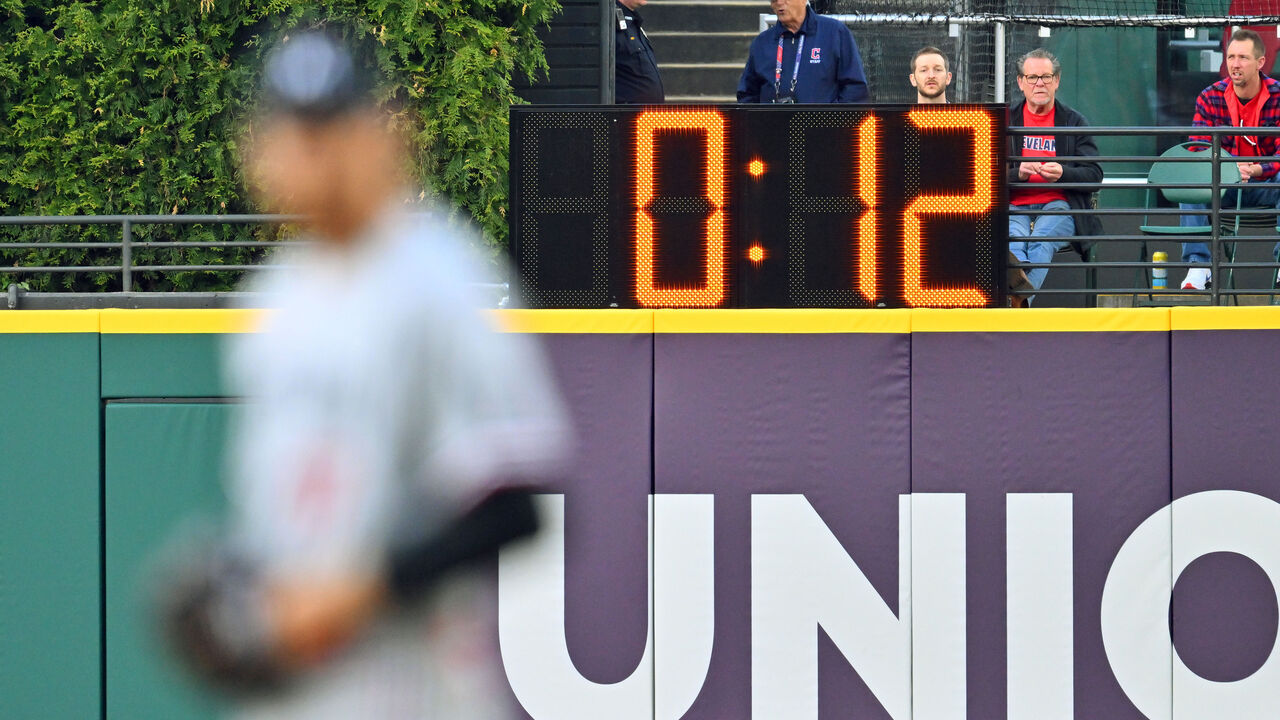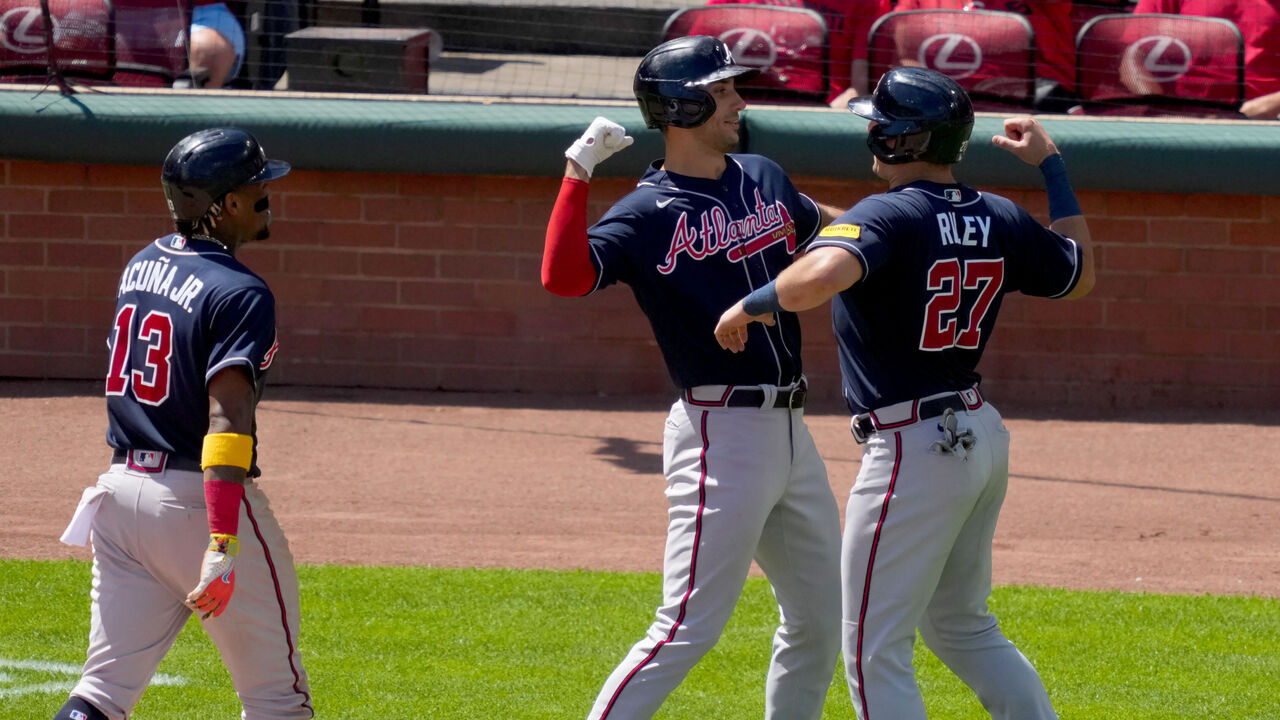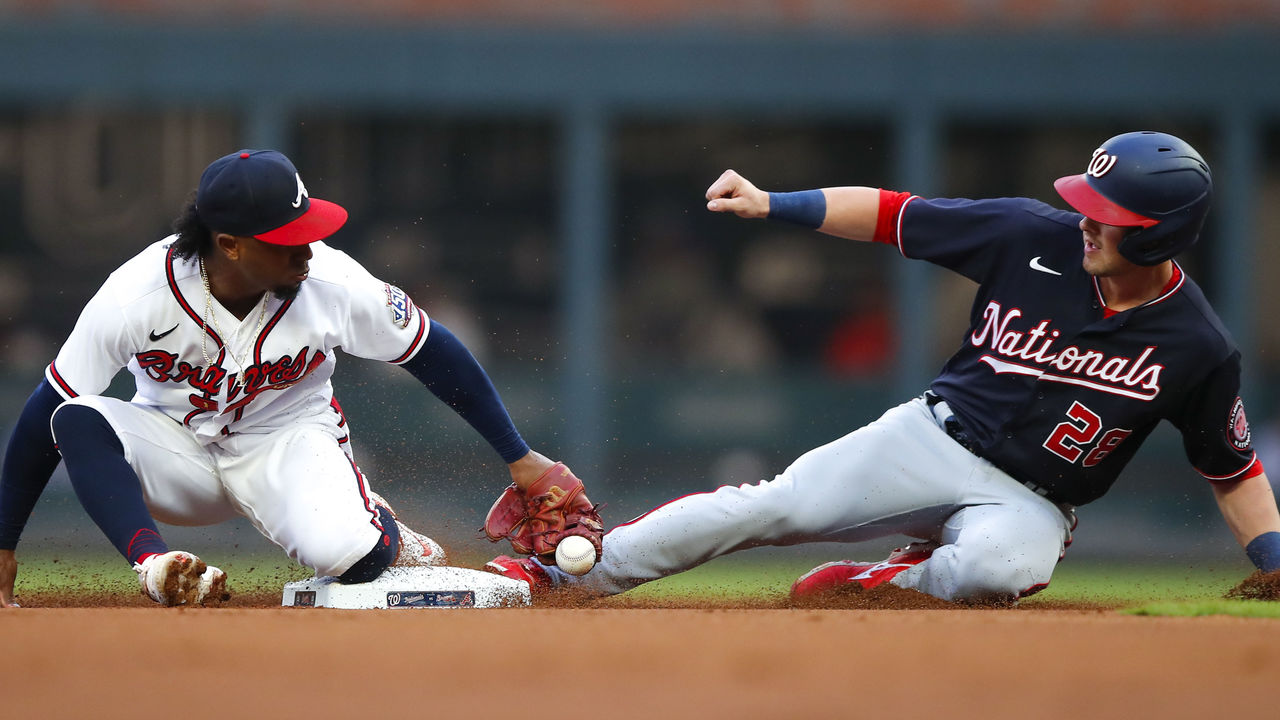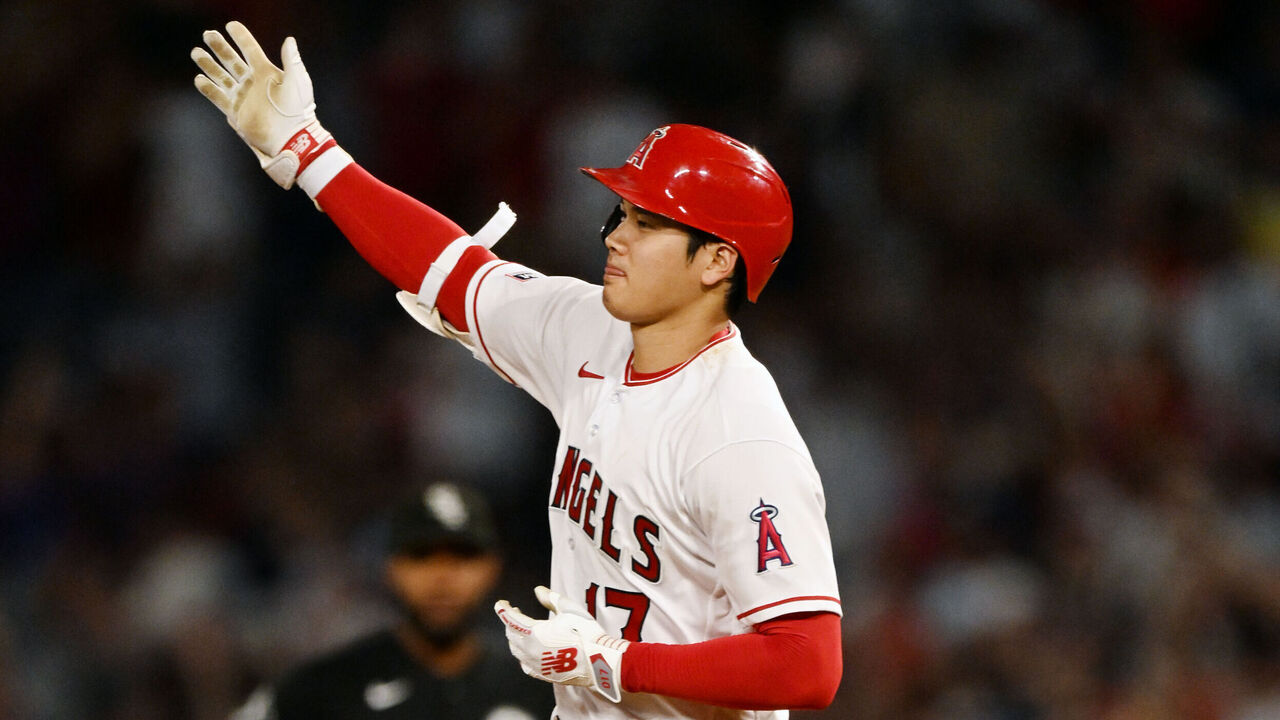Halfway home: Reflections as MLB season hits the midway point
While the All-Star break is considered Major League Baseball's midseason point, the actual halfway mark was crossed by most teams in late June.
Now, with 50% of the season complete, sample sizes are meaningful. Hopeful contenders either have work to do or enjoy advantageous positions. And in a season of major change, with new rules, we have a good idea what the new game looks like.
So, what have we learned halfway through one of the more consequential seasons in recent MLB history given the significant changes? Let's explore.
Fans are coming back
The pitch clock and new rules seem to be having their intended effect.
The average time of a nine-inning game is 2:37, down 26 minutes from a year ago. Games haven't been played this quickly since 1983.
There's less time between action on the field, and as a result - at least to some degree - MLB attendance is up more than 2,000 fans per game (2,117), or 8.4%, compared to the same point last season.

Attendance is up year-over-year in 22 of 30 markets.
And it makes sense, now that we've seen the other side: baseball simply wasn't as appealing a product with hitters adjusting their batting gloves outside the batter's box between every pitch, and with some relievers averaging more than 30 seconds between pitches.
Make no mistake: this is a big deal for MLB after 15 years of nearly constant decline in attendance, with last year's attendance down 18% - or 15 million paying fans - from 2007. Compared to the first half of last season, 2.5 million more fans have gone through MLB turnstiles or at least had their e-ticket QR codes scanned.
The new style of game is more popular, and was much needed for a sport that entered the year with the oldest average fan base among major North American pro sports.
Money (alone) can't buy baseball happiness
Sure, it's great to be the Dodgers and have unlimited payroll potential and an excellent draft-and-development system. But as we're seeing this season, if an organization can only have one of spending ability or scouting-and-development strength, it's much better to have the latter.
The Mets have the greatest payroll of all time at $344 million this season. For all that Steve Cohen treasure spent, they're 18.5 games back of the Braves and 11.5 back of the Marlins in the National League East entering play Saturday.
The much-hyped Padres rank third in payroll at $246 million. They're 11.5 games back of the Diamondbacks, and are in fourth place in the NL West.

The Mets are failing in part because they're old. The Padres are younger but their extreme stars-and-scrubs approach has failed. Both rosters are indictments of organizational depth and player development. For instance, the Padres entered the season with only three true starting pitchers - Yu Darvish, Blake Snell, and Joe Musgrove - on their roster and they've been fortunate they've remained healthy.
It's much more advantageous to be like the Rays and get the most out of every player a club acquires. The NL's best team, Atlanta, is also excellent in development but has the luxury of payroll capacity, too.
Payroll can be a separator, and there is a correlation between spending and winning, but the best teams are still built from within.
Braves unusually strong favorites
The Braves have a loaded lineup. They homered five times in their first 10 at-bats against Minnesota's Joe Ryan on Tuesday, and the excellent Ryan was coming off a complete game shutout in his last start.
When Spencer Strider - perhaps the best starter in the game - is on the mound, the Braves are the strongest team in baseball. Two Strider starts in a postseason series will make the Braves extremely difficult to play against in October.
In fact, the Braves enjoy a 23.9% chance to win the World Series according to FanGraphs (entering play Saturday), an unusually strong number at the halfway point in the wild-card era.
The only other teams with World Series chances of 20% or better through the first 80 games of a season since FanGraphs began tracking odds in 2014 were the 2017 and 2018 Houston Astros (21% in 2017, 25% in 2018). The 2017 Astros won it all - with some illicit help.

The Braves are an outlier among contenders. They could get more help soon, too, as starting pitcher Kyle Wright has begun a throwing program.
Atlanta's alone at the top but the field of contenders is wider.
Muddled playoff field to make for intriguing summer
When MLB added another wild card to each league in last year's labor agreement, it figured to keep more teams in the race longer.
That didn't exactly happen last season. (This season, the Central Divisions are keeping teams even with losing records in the postseason chase longer.)
On July 1 last year, there were 10 MLB teams with less than a 1% chance of reaching the postseason, and 12 clubs with chances under 10%, according to FanGraphs.
This year, there are only four teams with chances under 1%, and nine at 10% or less.
This could complicate the trade deadline, but it should make for more interesting (if watered down) September baseball. There simply aren't that many teams with virtually no chance (sorry Royals, A's, Rockies, and Nationals fans).
A group of contenders and fringe-tenders this large in the mix in the second half of the season has never happened before in MLB history. Will it be the new normal?
New steals environment is for real
The one major on-field impact of the new rules isn't so much from the shift ban, which caught the most headlines over the winter. Batting average on balls in play this season is .297, in line with most seasons of the last decade, though up from .290 last year. On the bases is where the game is most changed.
Steals were way up early this season and remain elevated. As the season hit its midpoint, total steals were on a 3,540 pace, up by more than 1,000 compared to last season.
The 79.3% success rate is also better than last year's 75.4% mark, and would brush with history. There have only been three MLB seasons in recorded history when the rate was 80% or better, all in the 1920s.
And the volume and success rate remain steady.
There were 605 steals (1.42 steals per game) in March and April, stolen at a 79.3% rate.
In May, there were 590 (1.42 per game), paired with a season-best 79.9% success rate.
Through June 29, there were 553 (1.43 per game), stolen at a success rate of 78.6%

So far, pitchers and catchers haven't made much of an adjustment.
The pitchout has largely gone extinct, ostensibly because teams don't want to give up strikes. There were 619 pitches classified as pitchouts in 2008. Last year? Forty. MLB's on pace for 36 this year.
There are some more hybrid pitchout efforts.
Christian Vazquez caught stealing using a modified pitch out. Requires less footwork from the catcher than a pitch out & is easier to execute for the pitcher because he does not have to throw into open space. pic.twitter.com/FyKcZta3TF
— Jerry Weinstein (@JWonCATCHING) June 20, 2023
Anecdotally, there also seem to be more back picks thrown to first base, too.
But it might be difficult to make any kind of adjustment other than finding catchers with better pop times, more Patrick Baileys.
Patrick Bailey has now thrown out 10 runners. His 37% caught stealing rate is almost double the league average of 20.3%. The bat has been a huge bonus, but Bailey is already a weapon behind the dish. pic.twitter.com/S2B47gld4P
— Danny Emerman (@DannyEmerman) June 27, 2023
Expect the thievery to continue.
Can Ohtani produce best season ever?
With Shohei Ohtani taking his game to an even greater level, and Aaron Judge injured, there's little doubt about the best player in the AL, let alone in the majors.
Ohtani's having a remarkable season. The question isn't whether he'll win MVP, it's: Is he putting together the greatest season of all time?
In the Angels' 81st game Tuesday, Ohtani struck out 10 on the mound and hit two home runs - his MLB-leading 27th and 28th shots. He hit No. 30 on Friday night.
He finished the first half with over 6 WAR, and sits at 6.1 through 84 team games entering Friday.
That means Ohtani is tracking for a 12-plus WAR, which is monumental. A 12-WAR level has only been reached nine times in MLB history, and not since Barry Bonds in 2002. (Before Bonds: Lou Gehrig in 1927.)

If Ohtani maintains his pace, he'll flirt with 190 innings, 250 strikeouts, and a sub-.300 ERA, in addition to 50-plus home runs and a MLB-best OPS. No player has produced anything like that - ever.
Babe Ruth's best dual-effort season was in 1919, when he tossed 133 innings for the Red Sox and made 542 plate appearances. He never pitched more than nine innings in a season again.
Ohtani was the first player to exceed 600 plate appearances and 150 innings pitched in a season last year. With health, he'll improve on those numbers.
Is he tracking for the best season ever? No. He's unlikely to ever exceed Babe Ruth's 14.7 WAR in 1923, but replacement level is much different today than it was 100 years ago. Ruth, then, was the rarest of sluggers. For a time, he was the only home-run hitter. The truth is, WAR probably isn't the best measure for the best-season-of-all-time debate. What we can say: No one has ever done what Ohtani is doing except for Ohtani. And this is his best effort.
It might very well be the best season of all time.
It certainly is the best contract year of all time.
Travis Sawchik is theScore's senior baseball writer.